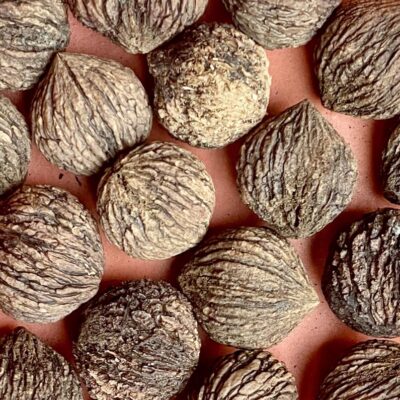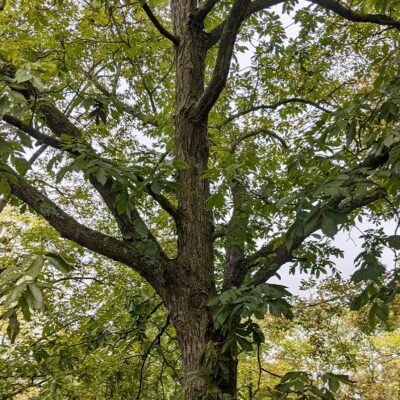- Nursery Shop
- Learn
- Blog
Our Latest Posts
- About
- Contact
Open Nursery Days – Fridays, June 13 & 27, 10am-5pm – Learn More
- Nursery Shop
- Learn
- Blog
Our Latest Posts
- About
- Contact
Open Nursery Days – Fridays, June 13 & 27, 10am-5pm – Learn More
Juglans regia
Originating in the Carpathian mountains in Poland, this cold-hardy walnut species is also known as English or Persian walnut. Produces sweet, thin-shelled nuts that are easy to crack. Avoid planting in frost pockets as trees bloom in mid-May to early June. Some specimens are self-fertile but produce more with another Carpathian walnut planted nearby.
Zone: 4-9 (Map)
Habitat: Prefers loamy, well-drained soils. Will tolerate drier, less-fertile sites. Full sun.
Growth: 50-70 ft tall, 30-40 ft wide at maturity.
Prohibited: AZ, CA, KS, TX

The Carpathian Walnut tree boasts extra cold hardiness and produces thin-shelled nuts that are easy to crack.
2-3′
$60.00
The Carpathian Walnut tree boasts extra cold hardiness and produces thin-shelled nuts that are easy to crack.
2-3′
$60.00
Juglans regia
Originating in the Carpathian mountains in Poland, this cold-hardy walnut species is also known as English or Persian walnut. Produces sweet, thin-shelled nuts that are easy to crack. Avoid planting in frost pockets as trees bloom in mid-May to early June. Some specimens are self-fertile but produce more with another Carpathian walnut planted nearby.
Zone: 4-9 (Map)
Habitat: Prefers loamy, well-drained soils. Will tolerate drier, less-fertile sites. Full sun.
Growth: 50-70 ft tall, 30-40 ft wide at maturity.
Prohibited: AZ, CA, KS, TX

Find out more about our approach to farming and land stewardship.